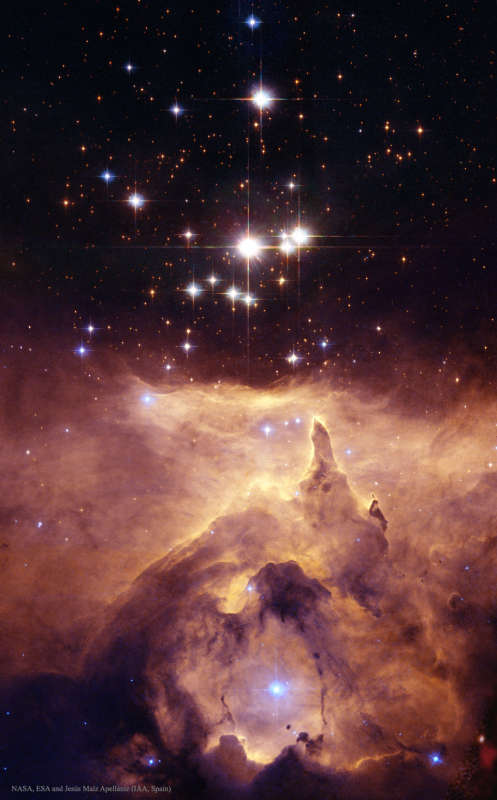
|
Credit & Copyright: NASA,
ESA and Jesús Maíz Apellániz
(IAA, Spain);
Acknowledgement: Davide De Martin
(ESA/Hubble)
Explanation:
How massive can a normal star be?
Estimates made from distance, brightness and standard
solar models had given one star in the
open cluster Pismis 24
over 200 times the mass of our
Sun, making it one of the most massive stars
known.
This star is the brightest object
located just above the
gas front in the
featured image.
Close inspection of
images taken with the
Hubble Space Telescope,
however, have shown that Pismis 24-1 derives its brilliant luminosity
not from a single star
but from
three at least.
Component stars would still remain near 100 solar masses,
making them among the more
massive stars currently on record.
Toward the bottom of the image,
stars
are still forming in the associated
emission nebula
NGC 6357.
Appearing perhaps like a Gothic
cathedral, energetic stars near the center appear to be
breaking
out
and illuminating a
spectacular cocoon.
Teachers & Students:
Ideas for Utilizing APOD in the Classroom
|
January February March April May June July August September October November December |
| |||||||||||||||||||||||||||||||||||||||||||||||||||||||
NASA Web Site Statements, Warnings, and Disclaimers
NASA Official: Jay Norris. Specific rights apply.
A service of: LHEA at NASA / GSFC
& Michigan Tech. U.
Based on Astronomy Picture
Of the Day
